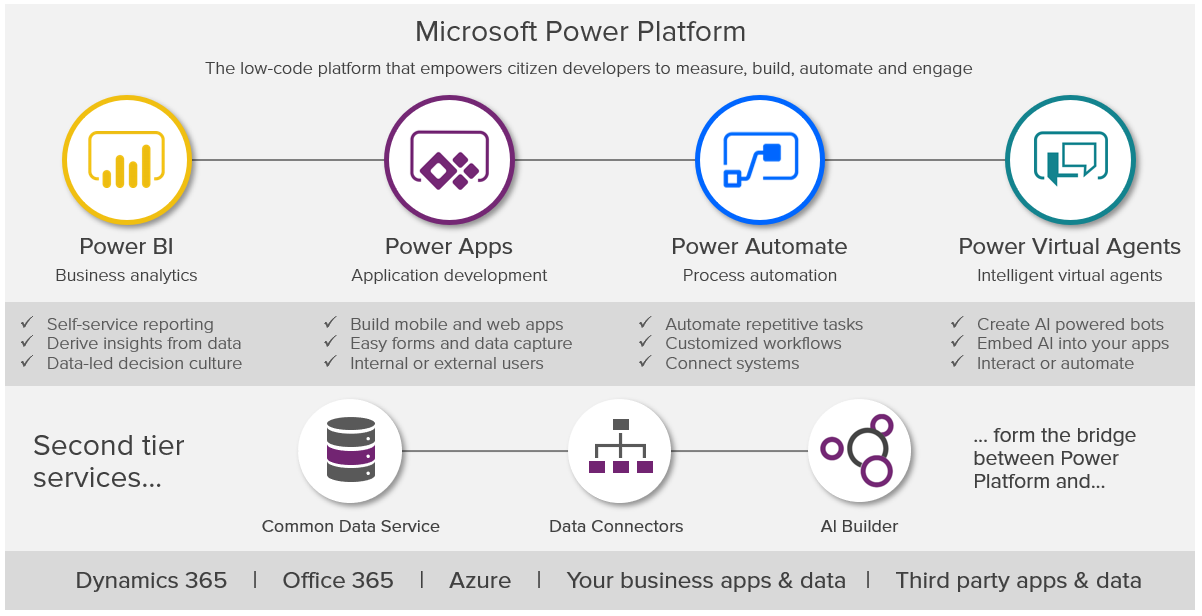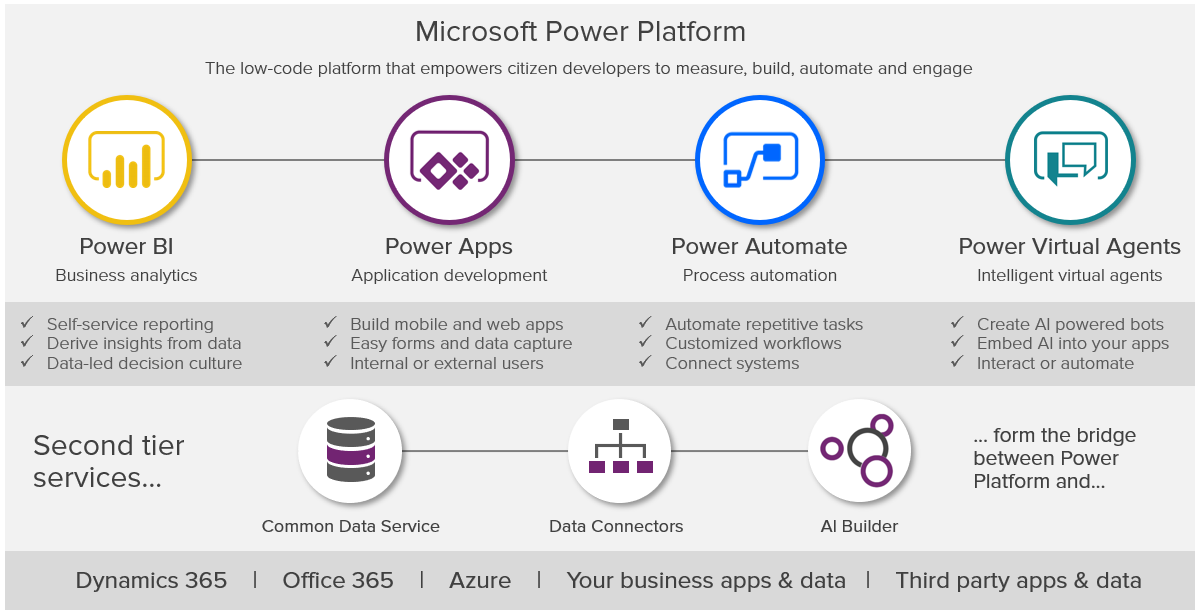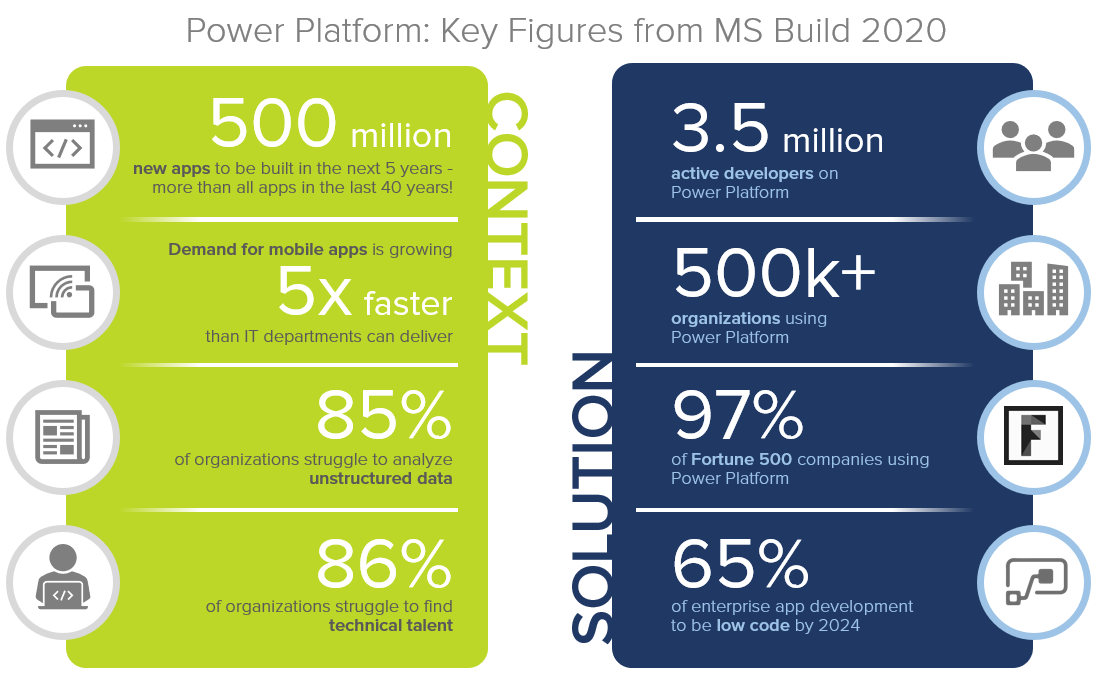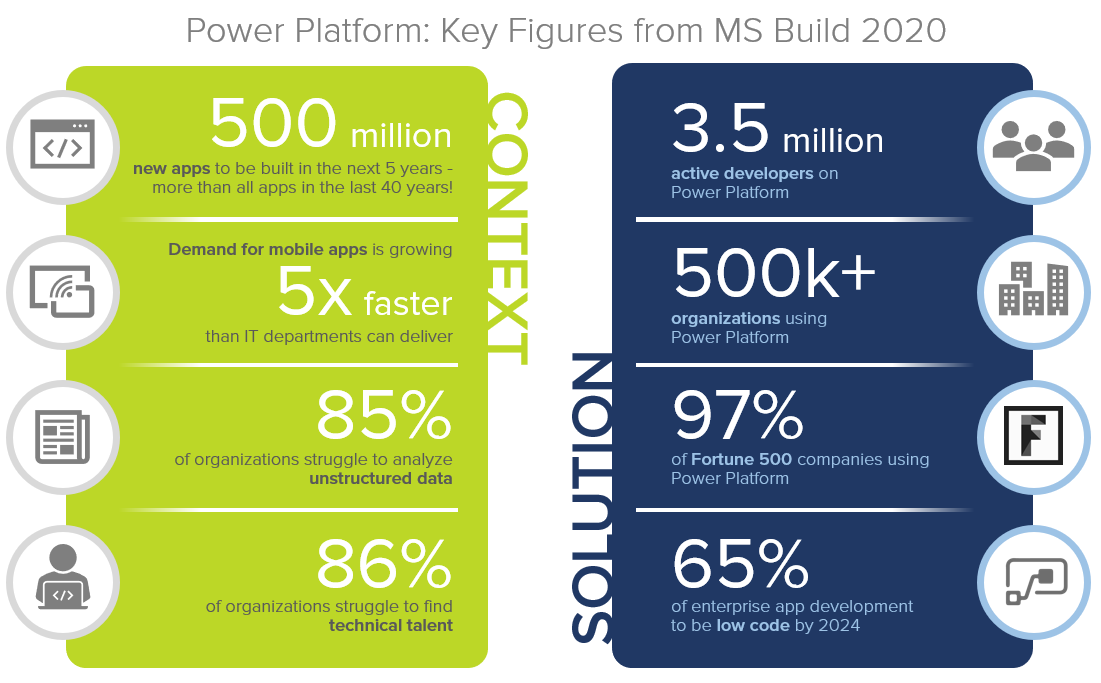Microsoft Build 2020, one of the key events in the technology calendar, was held as an all-virtual event for the first time this year. Open Box was in attendance, and I was interested to see the increased number of sessions for Microsoft’s growing productivity suite, Power Platform.
The lowdown on low code
The Power Platform consists of a collection of low code cloud services that enable rapid development of custom solutions and workflows by “citizen developers”. These are business users empowered by the toolkit to develop basic solutions with practically no development or IT infrastructure knowledge, through a process that is more like building Lego than writing code. These apps may be ready for deployment into your business right away, or may serve as prototypes to be refined by “pro developers”.


Click image to enlarge
Build 2020 confirmed that Microsoft sees low code as taking over the bulk of app development from traditional code in the next few years – we’ve reproduced some of the astounding figures behind this assessment below. With numbers like this, it’s no wonder Microsoft continues to put a lot of focus on this platform, augmenting it with simple-to-understand features for citizen developers, provide pro developers the tools they need to support citizen developers and build more complex requirements, and to enable IT Pros to secure, govern and monitor the usage and adoption of the platform. Acquisitions are a major factor in this rapid growth - one of the key announcements was the purchase of an established RPA player called Softmotive by Microsoft to augment their robotic process automation feature set.


Click image to enlarge
We’ve already found that the platform has the potential to fast-track solution development
Here at Open Box we’ve already found that the platform has the potential to fast-track solution development, a necessity as companies are put under pressure to respond to the demands of the COVID-19 pandemic. We’ve used Power BI to help our clients to quickly develop their own Tenant Risk dashboards and reports, enabling near real-time access to the information needed for rapid decision making.
The seamless integration of Power Apps with the Office 365 environment and Microsoft Teams is helping our clients to respond to the sudden demand for tenant and employee data capture as people prepare to go back to work. And with more of our clients interested in increasing efficiencies with Power Automate, we are on the front lines of determining how this tool measures up to the big players in automation.
MS Build presents a COVID-19 case study
In late March, as the COVID-19 crisis escalated, Swedish Health Services reached out to Microsoft for some assistance. Tracking the number of patients in a hospital, changing hospital capacity as new beds were added, availability of ventilators and PPE, and staff allocations had created a logistical nightmare that they were ill-equipped to respond to. Leveraging the Power Platform, they were able to rapidly develop an Emergency Response App (CERA) to better capture information and visualize the fluid situation in near real-time. Incredibly, it took less than two weeks to implement and was soon used by over 400 Swedish employees.
Kevin Brooks, the Chief Operating Officer at Swedish First Hill and co-developer of the CERA app reported that "This near real-time view of quickly changing data is empowering Swedish to better prepare for a COVID-19 surge and better manage the needs of our patients and caregivers.”
Closing thoughts
One of the recurring questions CIOs have needed to grapple with has been whether to build or buy. The prevailing mantra is “configure over customize” to avoid the large capital costs associated with custom solutions. I believe solutions like the Power Platform are increasingly allowing off-the-shelf and custom solutions to sit side-by-side, chipping away at that argument. It no longer needs to be a binary decision – you can have your cake and eat it.
Build or buy? It no longer needs to be a binary decision
At the same time, business and IT are being asked to adapt more now than ever before with the COVID-19 challenges faced, and there is going to be a great deal of innovation needed. Many business processes will need to change, and off-the-shelf functionality will not cater for all of them. I believe low code platforms like the Microsoft Power Platform are perfectly positioned to enable the next wave of innovation at the grass roots level to fill the gaps left by off-the-shelf solutions. This is an innovation cycle you may not want to be caught out of.



.png)
